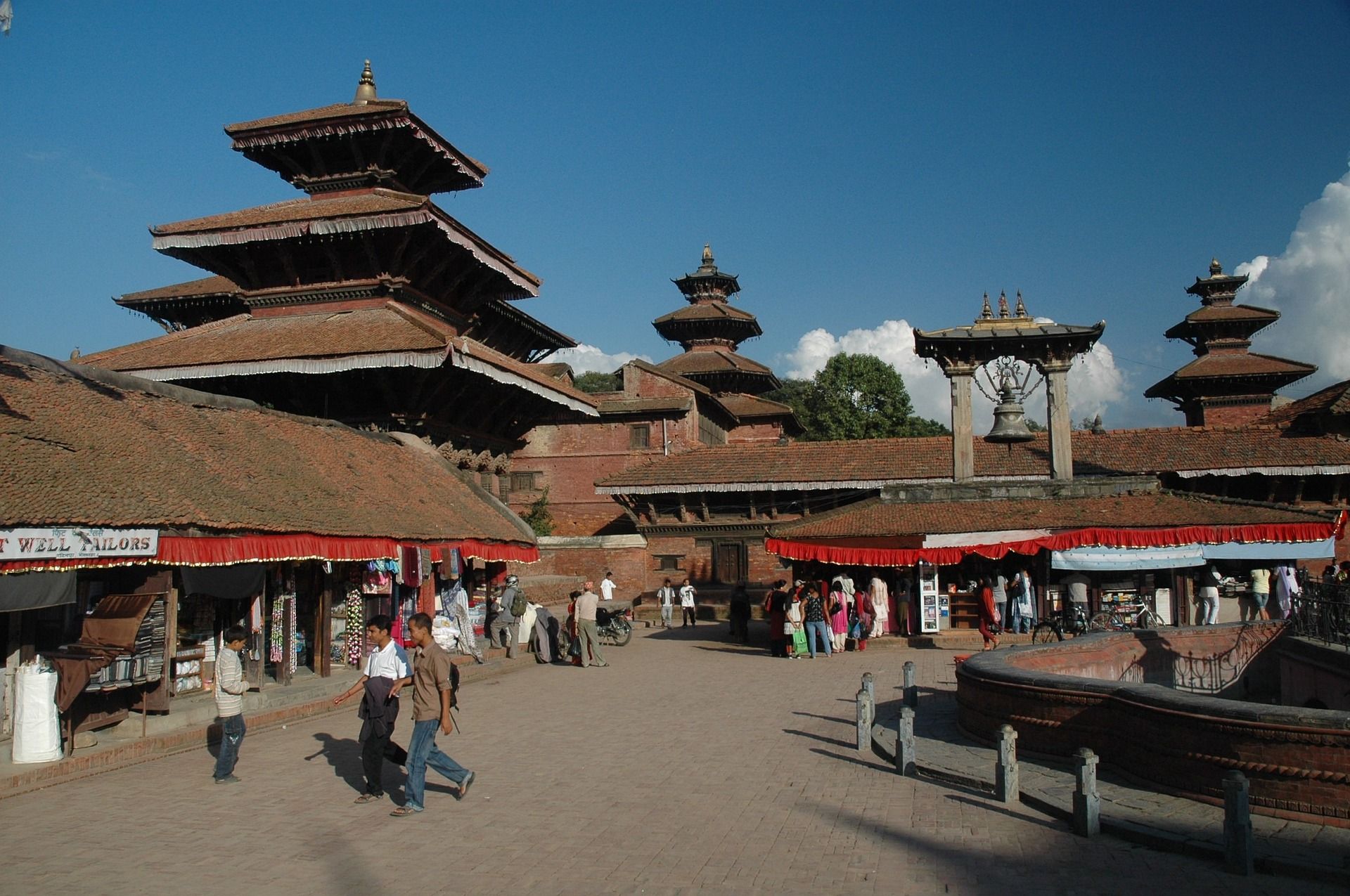You might have heard a lot about this beautiful country which is rich in natural beauty and has also been dubbed as a piece of paradise left behind. The multi-cultural country with a rich history has also renowned for its gigantic mountains and deep-rooted culture and religions. But, here we have listed 15 things that you probably didn’t know about the country.
1. Nepal is the only country with a non-rectangular flag
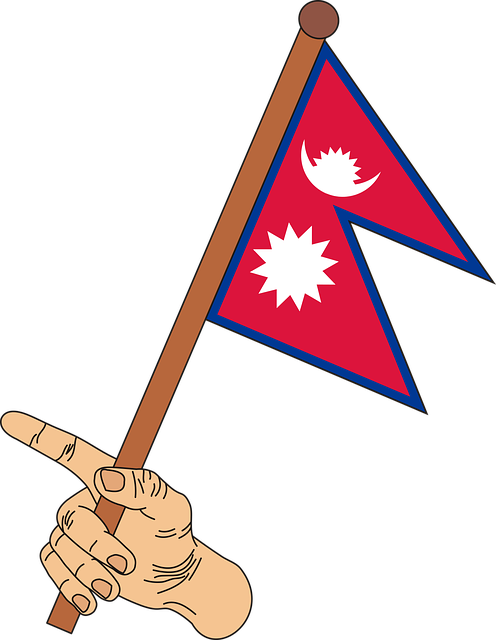
You might be taken in by the shape of the Nepali flag when you stumble on it for the first time. Nepal is the only country with a fascinating triangular-shaped maroon-colored flag with a dark blue borderline. The two triangular shapes which are stacked on each other consist of a unique figure of their own which are white-colored; the upper triangle represents the moon while the lower triangle represents the sun which is the pride of the people.
You will be surprised that even the colors of the flag have stories of their own; the crimson red color of the flag represents the color of the country’s national flower Rhododendron as well as braveness and victory in wars of the Nepalese people. The dark blue color represents the peace, the symbol of the sun symbolizes the temptation and aggressiveness of the Nepalese warriors and the symbol of the moon stands for the peaceful and calm nature of the people; the overall triangular shape signifies the high mountains of Nepal. The beautiful tri-colored flag has been representing the nation since 1962, the study of the history of Nepal has proved that this particular design of the flag is over 2,000 years old.
2. Country of living goddess ‘Kumari’
Nepal is the only country in the world that worships a living goddess ‘Kumari’, across the globe you will not find any nation that has a living goddess. The word ‘Kumari’ is derived from the Sanskrit word ‘Kaumarya’ which stands for ‘princess’, it is believed that the divine energy of Devi ‘Teleju Goddess’ resides in the body of the young kumari in both Hindu and Buddhist religion.
These goddesses reside in the holy temples; they only reveal themselves to the general public during certain hours of the day, also, they are carried in chariots and worshipped during festivals. Even a glimpse of Kumari is believed to bring a stroke of good luck and fortune in life, so, you will find the Kumari vicinity and the festivals where she is present pretty crowded. The Kumari is the holy deity and embodiment of pure clean soul in Hindu and Buddhist communities. A chosen Kumari holds her position as a divine figure until she begins her menstruation period and she is relieved from her responsibilities, after that, begins the search for a new Kumari with 32 body perfection” Battish Lahshan” and goes through several tests to embrace the holy title.
3. Home to 10 UNESCO World Heritage Sites
Nepal is renowned in the world as the birthplace of Lord Buddha and as home to the tallest mountain in the world Mt. Everest. But, did you know that the country also boasts the 10 world heritage sites listed by UNESCO? Yes! The country holds eight of the cultural world heritage sites and two natural world heritage sites.
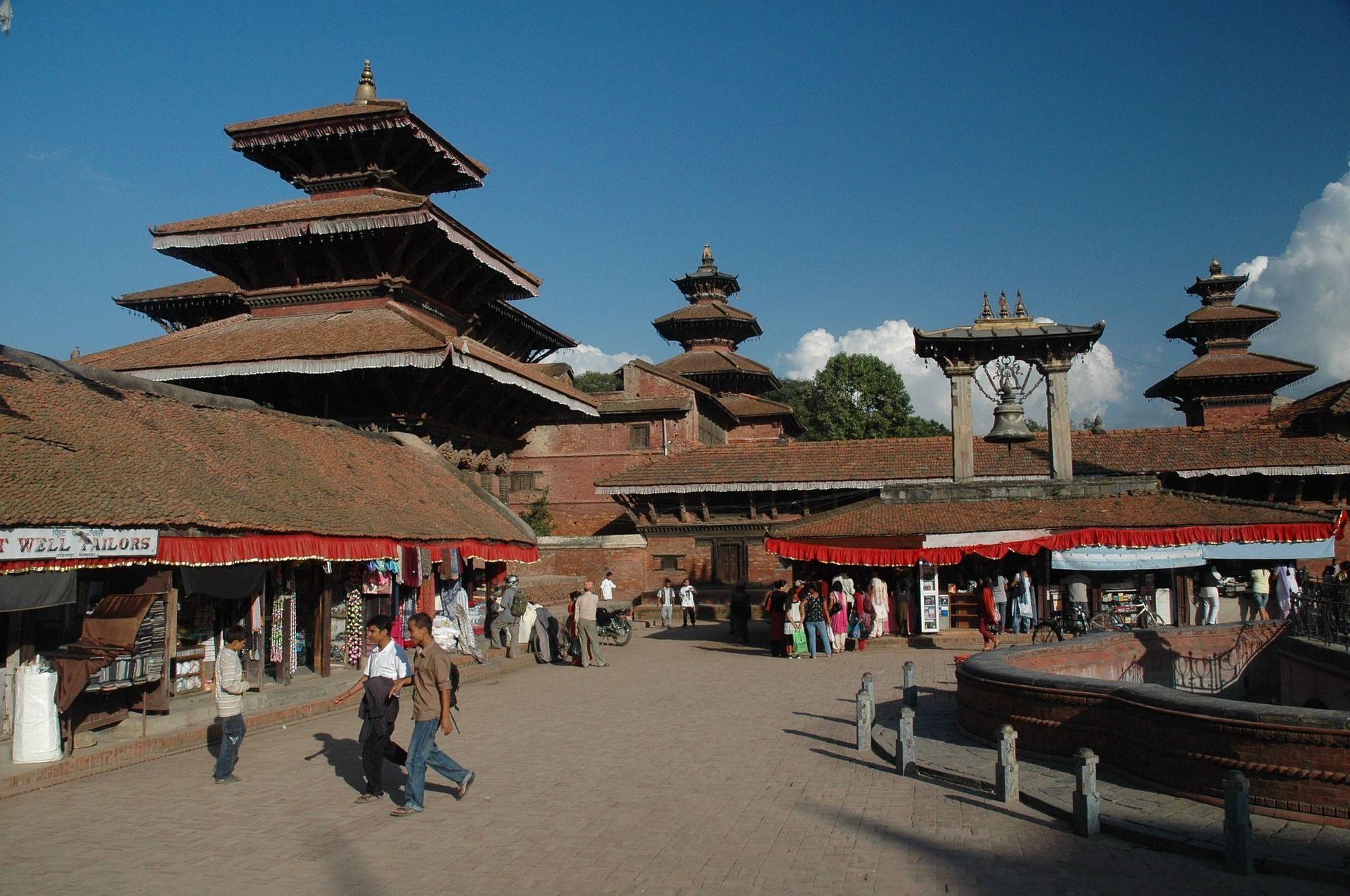
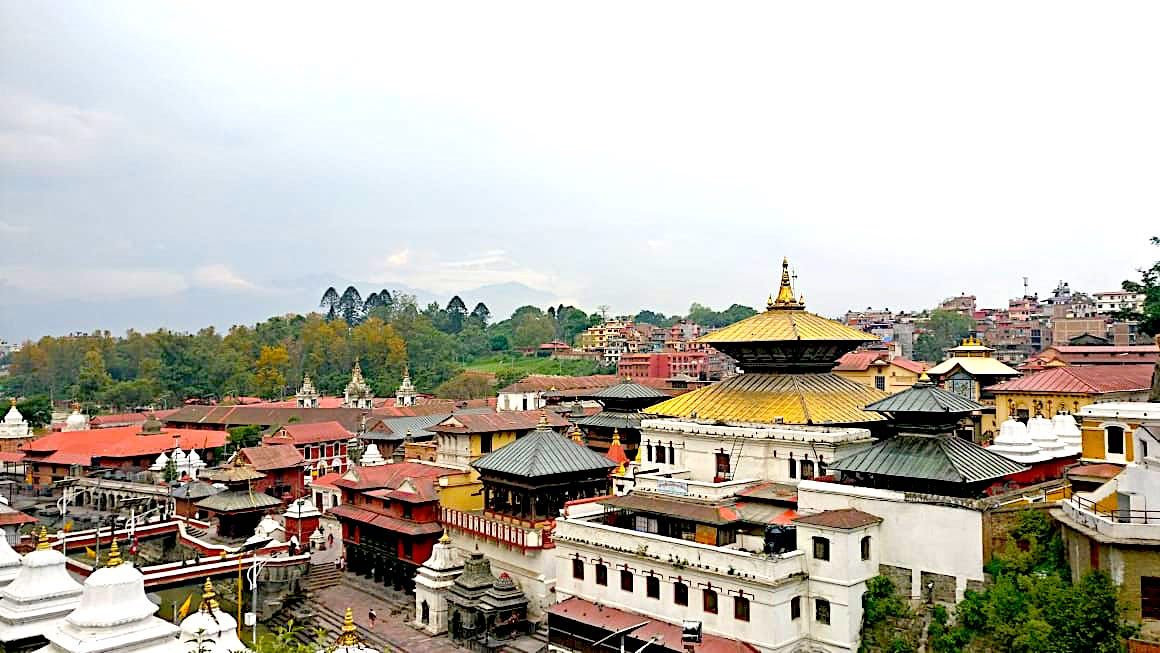
The Kathmandu valley alone treasures the seven UNESCO sites including Kathmandu Durbar Square, Bhaktapur Durbar Square, Patan Durbar Square, Sawaymbhunath Temple, Boudhanath Temple, Pashupatinath Temple, and Changunarayan Temple. All these historic and religious sites are of great value among the Nepalese people, they carry thousands of years old history, norms, and values. The other cultural world heritage site that the country is proud of is the birthplace of Lord Buddha, Lumbini. This holy site is located 300km southwest from the Kathmandu valley, and, showcases the history of Gautam Budhha and dawn of the Buddhist religion.
Besides these, the country is also home to two natural world heritage sites; Chitwan National Park and Sagarmatha National park. These national parks also protect rare species of birds and animals like peafowl, red jungle fowl, crocodile, red panda, snow leopard, Himalayan goral, etc. Located outside the valley these two natural heritage sites are also quite popular for jungle safari and mountain expedition.
4. Home to Abominable Snowman ‘Yeti’??
The topic of the existence of this Abominable snow creature has been a hot topic when it comes to interesting facts about Nepal. The popular mythical Himalayan creature has been believed to reside in the mountains of Nepal and Tibet region. Sir Edmund reported seeing a big footprint in an expedition of Everest in 1953, he also set out on a journey to find the yeti in 1958 but, no further details were found about the mythical snowman.
In the folk tales, the snowman has been described as a big monkey-like creature that resides in the woody areas on the mountain regions. The people in the Himalayan region and mysteries have often claimed that they have remain that belongs to this mythical creature; however, upon the study of these samples, they were not quite reliable evidence to support the existence of the creature. Although, Yetis have been featured in fiction and stories the existence of these creatures is still an unsolved question.
5. The capital valley was a big lake
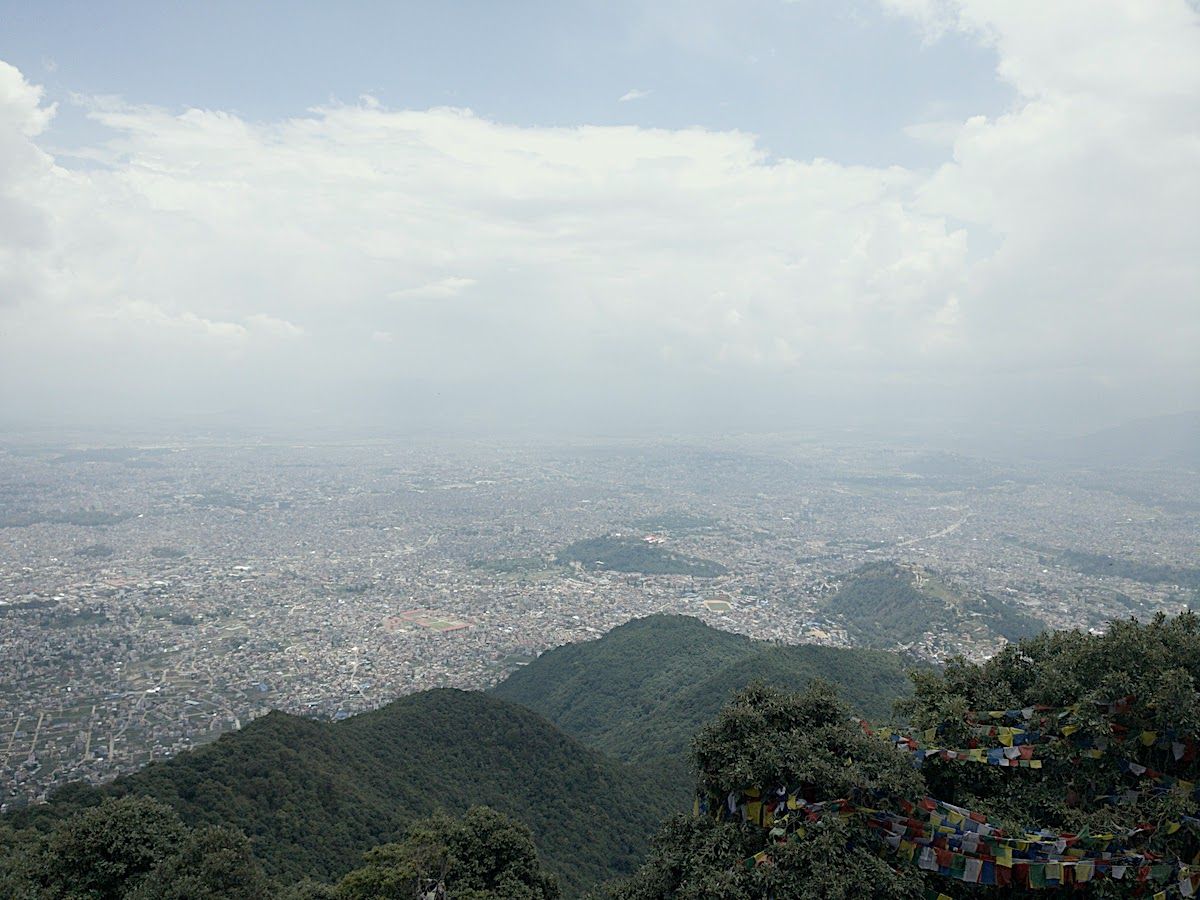
It is believed that Kathmandu valley was once a big pond of water, the study of both mythological and geological study has confirmed that the capital was truly a lake once.
According to mythology, it is believed that a great saint Manjushri when he saw the Kathmandu valley which was filled with water and cut off the Chobhar ridge with his mighty sword and let water flow outside the valley to let civilization thrive on the fertile land.
However, few geologists pieced a study together which stated the fact that the lake didn’t empty in one swoop whereas it did dry in phases and took over 15,000 years to be suitable for settlements. They have also found the fossils of extinct creatures like mammoths and ancestors of hippos and crocodiles tracking back to the Jurassic era. It is believed that the Kathmandu valley civilization with the Lichavi dynasty and Newar settlements flourished because of the fertile land.
6. Nepal is the country where the Elephant polo originated
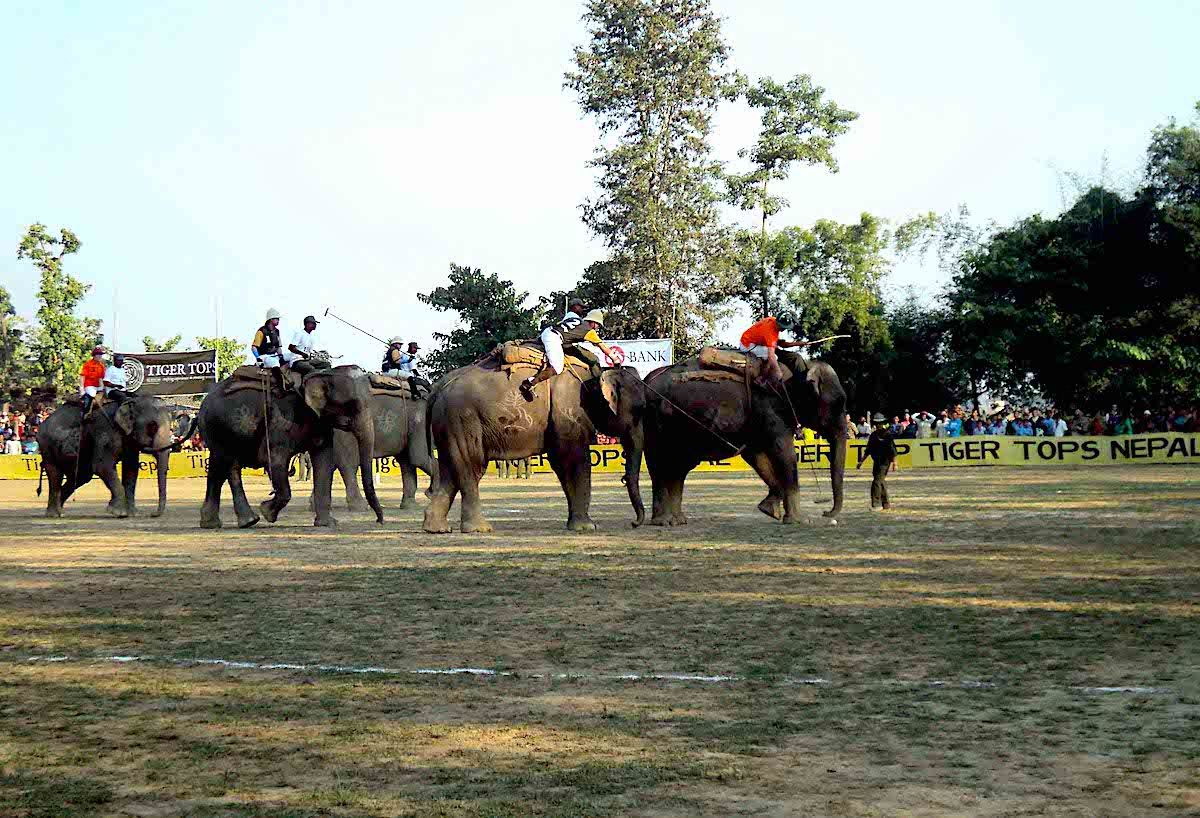
The unique sport which is played involving the domesticated elephant originated from Nepal. The amazing and thrilling sports are played in Meghauli Chitwan. The game is quite interesting and pretty similar to horse polo; the two players ride the elephant and try to score as much as they can by using polo sticks.
The first elephant polo game was played with a soccer ball in the country which was later replaced with standard polo ball as the elephants kept smashing the soccer balls. The World Elephant Polo Association (WEPA) established its headquarter at Tiger Tops Jungle Lodge in Chitwan in 1982. The first-ever game was held on a grass airfield in the Meghuauly which is located at the corner of Chitwan National Park. The country also holds World Elephant Championship every year in the Chitwan National Park attracting thousands of tourists and participants from all over the world.
7. The county has the deepest gorge in the world
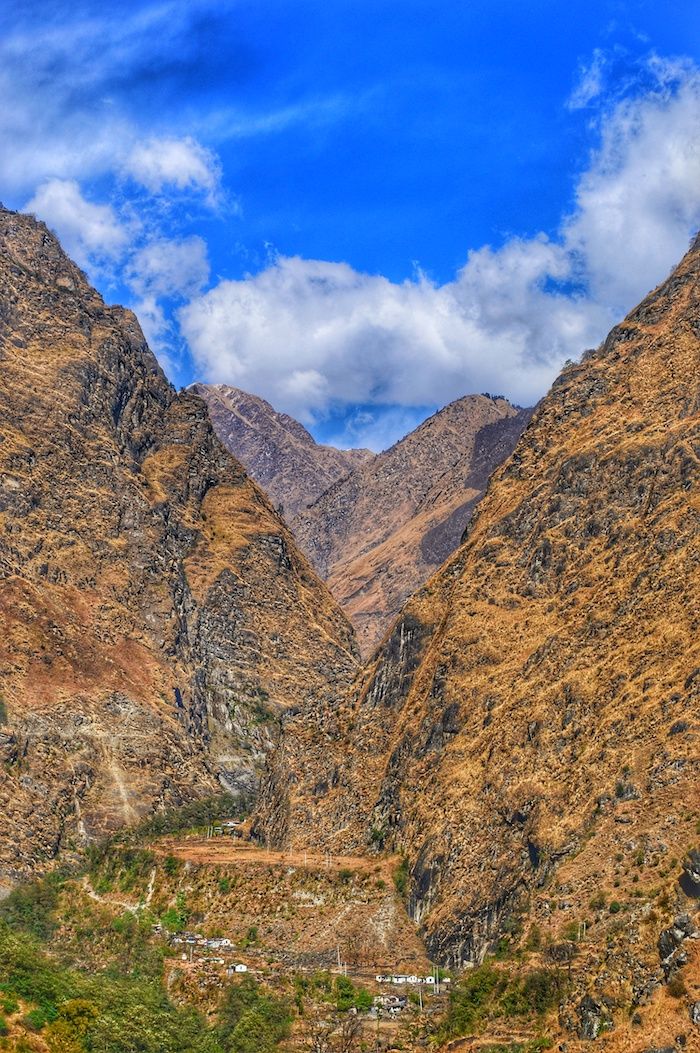
It might come as a surprise that the country with the tallest mountain in the world is also home to the deepest gorge in the world. Well, it’s true, the Kaligandaki gorge which is also known as Andha Galchi is the deepest canyon in the world. Laying in the Himalayan region this gorge is 5,571 meters or 18,278 ft. deep and bottom of this gorge the magnificent Kaligandaki River flows. This deep gorge separates the major peaks like Dhaulagiri in the west side and Annapurna on the east side.
This river is also considered one of the holy rivers in the country; the name ‘Kali’ was given to the river after the Hindu goddess Kali who personifies the powerful force of nature, a very suitable name for the fierce river. Further, the Kali Gandaki gorge was also used as a trade route between Tibet and India for many centuries.
8. Unique calendar
Besides having a unique non-rectangular flag, the country also doesn’t follow the regular Gregorian calendar like other nations. The country still has been officially practicing its own calendar based on Bikram Sambhat in every sector which is an ancient calendar of Hindu tradition.
The country’s calendar has been estimated to be approximately 67 years and 8.5 months ahead of the Gregorian calendar so, when the rest of the world is celebrating their New Year in January, Nepalese people celebrate their own new year during mid-April. But, they totally don’t bypass the Gregorian calendar, the Nepalese people have high regard for the major festival like Christmas and Gregorian New Year; they do celebrate them in high spirits, so, logically they do get to celebrate two new years. Besides that, the country also has a unique time zone and their standard time is 5 hours and 45 minutes ahead of GMT.
9. The majority population of the country is Hindu
Before getting declared as a secular state by parliament in 2006, Nepal was the only country Hindu country in the world. However, still, the majority of the population which is approximately 81.3% follows the Hindu religion. Similarly, 9% of the population follows Buddhism, 4.4% follow Islam, 1.4% Christianity and 0.8% follow other religions. There are over 80 ethnic groups and more than 123 languages are spoken in the country.
During your trip, you will also find the majority of the structures, temples, and sculptures representing the Buddhist and Hindu religions; the tradition of worshipping Buddhist figurine at a Hindu temple and worshipping Hindu Figurine at Buddhist shrines; the two religions co-existing with each other at the same place which cannot be found anywhere in the world is a prime example of diversified unity. One of the amazing facts about the multi-ethnic, multi-religious, and cultural the country is that not even shed a single drop of blood in the name of religion or ethnic group. The country’s harmonious living lifestyle despite having so many ethnic and religious backgrounds have been used as an example of unity in diversity.
10. Nepal has never been conquered
The beautiful landlocked country doesn’t celebrate its independent day as it has never been conquered by any superpowers in the world. The famous brave warriors who are known as ‘Gurkhas’ are from Nepal, for their bravery the Gurkhas also have received a separate army regiment in the British army-- The Royal Gurkha Rifles(RGR) which has the motto” Better to die than to be a coward”, they have been part of the British army since 1815. Similarly, they have also received high honored recruitment in the Indian army.
With a brief study of history, you can find out about the brave warriors who have secured a place in the history of the country for bravely fighting against the East Indian Company. The Anglo-Nepalese war which was between EIC and Nepal for the country’s expansionist tendencies lasted for a full two years which also gave birth to a lot of heroes earning the respect of the British Empire. The prideful warriors of the country have fought against many powerful foes to protect the country’s sovereignty and so the people could always breathe the air of freedom.
11. Natives prefer Namaste over handshakes
Like other countries in Asia; China, Japan, and Korea where people bow as a form of greeting, and two show respect, Nepal also practices a unique tradition over the handshakes. The practice of handshake is not that common when it comes to greeting elder people, strangers, or relatives. The traditional practice of putting two palms together and bowing forehead to show respect saying ‘Namaste’ has been passed down for generations.
Although the modernization has taken a leap in the country, it is quite beautiful to see that the tradition has been flourishing even in this era. The youngsters also are taught to join their hands to show respect; generally while greeting relatives or elder people the youngsters prefer Namaste over a casual handshake. Moreover, this greeting culture also signifies that the other person is saluting the god inside you, so, return the beautiful gesture if someone greets you with a ‘Namaste’.
12. Nepal’s national animal is a cow
The cow is the national animal of Nepal, it was declared in Nepal’s new constitution on 20 September 2015; the cow was picked as the national animal when the debate was going on between picking one-horned rhino or cow. After the announcement of the cow as the national animal, the slaughter of cows was banned from the country giving it constitutional protection.
Also, the majority of the population in the country is Hindu and in the Hindu religion, the cows are considered a divine figure and are worshipped on several occasions. Moreover, in Hinduism, cows are one of the purest forms of creation that feeds-nurtures and shed tears for humans like a mother, that why it is strictly prohibited to slaughter cows inside a Hindu community. You will also see cows wandering around the streets and people not trying to bother them. In case, if you can’t survive without beef, the country has banned the slaughter of cows in the country, but, you can enjoy beef at several restaurants and hotels in the country.
13. The people are crazy about MOMOs
In your exploration, you might figure out about the momo craze of the Nepali people. The dumpling comes in different shapes and sizes from different kinds of stuffing from dairy and vegetarian items to different kinds of meat items. The dumpling is prepared with special spices adding unique flavor fulfilling the needs of Nepali palate, that’s why it is one of the most popular dishes in the country.
This special dish has been on the menu for centuries and has become a part of national culture. The favorite dish of Nepalese people also comes in several flavors like steamed momo, chilly momo, jhol momo, open momo, tandoori momo, sea momo, and so on. This dish also can be found almost in every corner of the country, so when you are on a trip to the country, make sure that you try this star dish maybe the momo will take the favorite spot in your food list.
14. So many records despite being a small landlocked country
Although the country may be of small size, you will be amazed by how many world records this country holds in its name. Besides the major attraction like the highest mountain on earth Mt Everest(8,848m) and deepest gorge in the world Kali Gandaki, the country also holds the record for the highest valley on earth which is located between two of the highest mountain peaks Mt. Everest and Mt. Makalu--Arun valley, the valley with hypnotizing the natural beauty and diverse culture.
In addition to those, the country also boasts the highest lake in the world, Tilicho Lake; the magnificent lake is at the elevation of 4,800m. Further, the deepest lake in the world Shey-Phoksundo Lake which is 145m deep is the pride of the nation. Moreover, the country also holds another interesting for the highest altitude hotel across the globe, yes the Hotel Everest is the highest altitude hotel in the world situated at 3880m height from the sea level.
15. Nepal was known as a weed capital
It might come as a surprise that Nepal used to be a hub for weed buying and selling at a certain point. Although, it is illegal to sell and buy weeds in the current situation, the open use of marijuana used to be legal in the country till the lates 70s. The country’s capital, Kathmandu used to be a piece of paradise for the hippies in the 60s to 70s. The weed used to be planted in rural areas, farms lands, hills, and almost everywhere in the country.
Also, in one of the major festivals in the Hindu religion--’Maha Shivaratri’ which is celebrated worshipping Lord Shiva, the smoking of weed is legal particularly on that day. As marijuana is considered one of the favorites of Lord Shiva, in the occasion of ‘Maha Shivaratri’, the weed is included in sweets as well as in a special drink called ‘Ghotta’.
